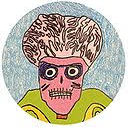- Tutu Kiladze
- K. McLeod
- Jim Diorio
- Grade Seven Girls
- Eliza Griffiths
- Alejandro Ballaudo
- LarchmontVanLonglunch
- Bob Bickford
- Michael McKinnell
- Tony Martins
- Gun Roze
- Carol Anne Gillis
- The Galaxy Brains
- Joe Macdonald
- Kathryn McLeod
- Rachel Eagen
- John Murray
- Zachary Rombakis
- Chris Robinson
- Ian Roy
- Jane Wilson
- Mr. Abbott
- Tracey Steer
- D. Rastgoo
- Robynne Sangiuliano
- Peter Simpson
- Alf Bogusky
- Michael Murray
- Yael Friedman
Introduction
In 1954, I was lazing my way through grade twelve in rural Ontario, when I saw an ad to join the Navy, and become an officer, first by attending a new school for two academic years in Victoria, and then becoming a “Midshipman” for a further year of training at sea.
In the 1950s the Canadian Navy was heavily influenced by the British Navy and a few hundred years ago they invented the rank of Midshipman, that is half-way between the “lower deck” (a common sailor) and the “upper deck” (a commissioned officer).
In 1956, I therefore found myself appointed to the brand new destroyer escort HMCS Assiniboine in Halifax, and along with several other newly promoted Midshipmen, we were expected to “learn by doing.”
One chore was the requirement to write a daily journal, recording not only what we learned each day, but also our observations on ports we visited, foreign navies, etc. Every Thursday the Captain read our journals and provided tart comments, not only on our writing skills, but on the quality of our observations.
We were fortunate to be in a new class of ship and the Government was anxious to show us around on both sides of the Atlantic, including in particular many bases of the US Navy. One unscheduled visit was to the US Navy base at Guantanamo Bay in Cuba where we stopped for some engine maintenance.
( What follows is a series of excerpts from this journal, as written and recorded by my 20 year-old father.)
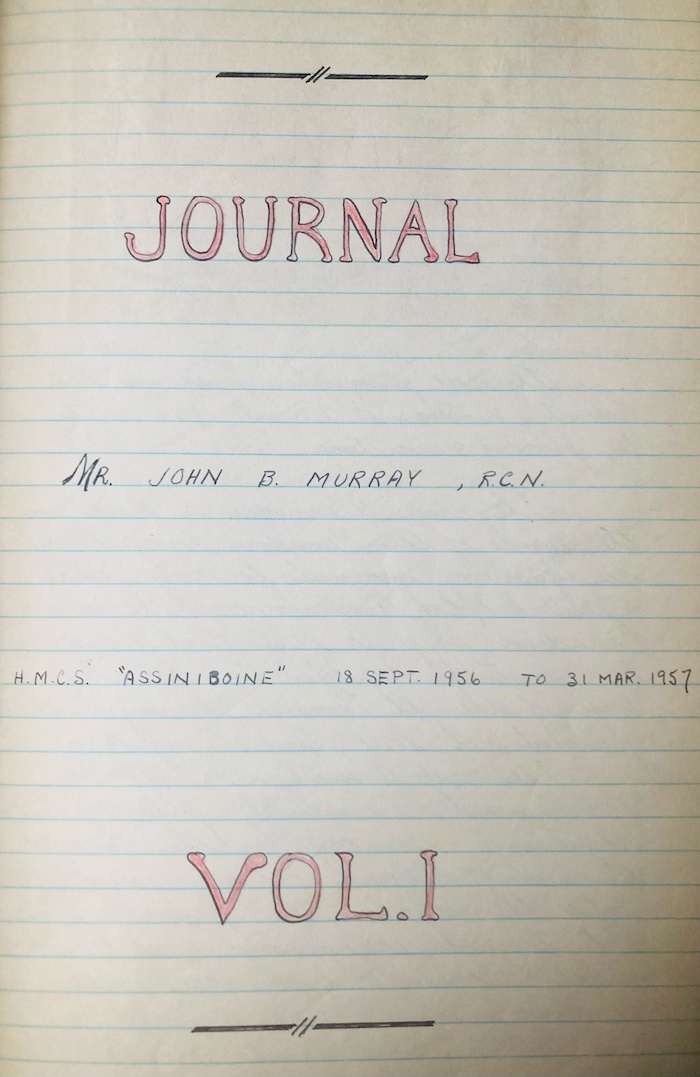
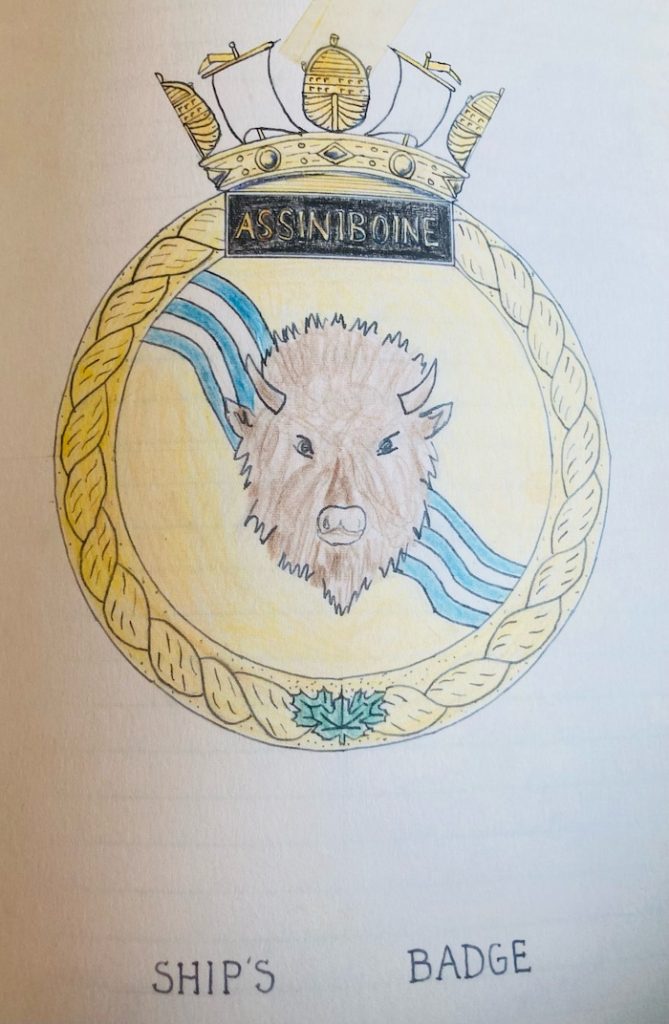
H.M.C.S. ASSINIBOINE at Guantanamo Bay
On the evening of the twenty-first we held a cocktail party in the wardroom for some of the U.S. personel. It was well attended and all the Americans seemed to enjoy themselves immensely. They never seem to tire of remarking on the fact that liquor is available in the wardrooms of H.M. Ships, and most of them find it most regrettable that the U.S.N. had to drop that particular Royal Navy custom.
This morning Sunday divisions were held on the jetty in whites followed by a march past and short church service. Considering the fact that the ship’s company have had no gunnery recently the standard of marching was very high. It was the first time this has been done in the ship and if we can do as well for Admiral’s inspection everyone should be satisfied.
At 1430 today the ship slipped and sailed for the San Juan exercise area. We will go into harbour for a few hours on Wednesday morning for briefing and then join up with the rest of the fleet. All the ships will go into San Juan on Friday for the long week end, sailing again on Tuesday.
Once again we sailed with fine weather and calm seas, so our luck with the elements seems to be holding very well.
Yesterday we continued on our passage to San Juan, in sight of land most of the way, because we took the route known as “Mona Passage.” The sea was a bit choppy, but had not yet become very rough.
Yesterday morning, for the first time, an attempt was made at firing a Mark 43 homing torpedo. A dummy torpedo was used with a line secured to it to haul it back inboard. With everyone standing back at a cautious distance, and anticipation in every face, the torpedo was fired—only to roll off the launcher and fall with a resounding “clunk” on the deck. From an operational point of view, the second attempt met with more success. The torpedo went over the side—only to sink and never rise again. If the supply branch wasted food of an equal value to that torpedo we would all have to quit eating for a month.
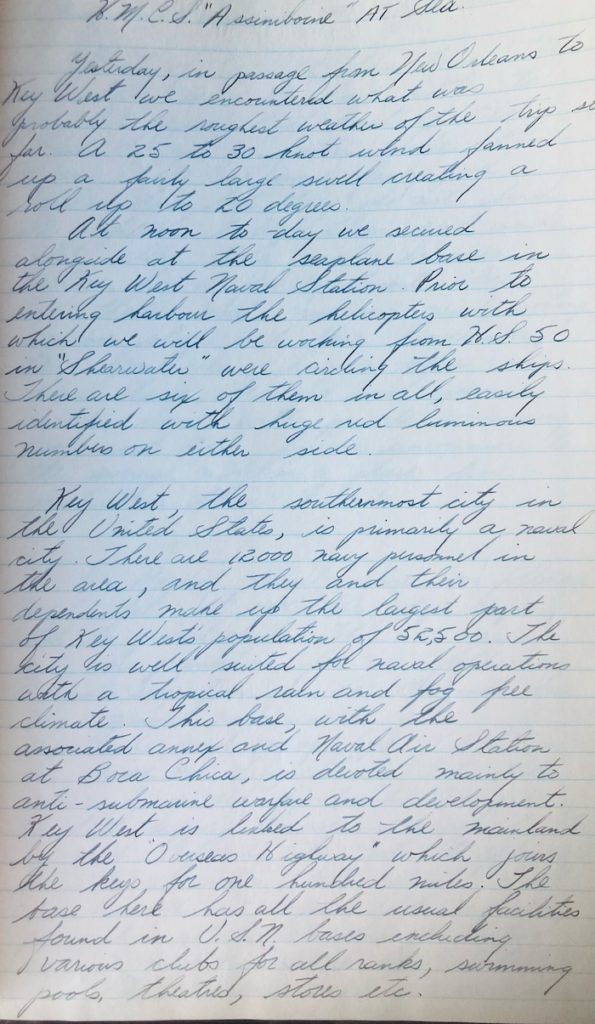
At 1600 yesterday we overtook a local schooner plying its way from one to another of the numerous islands in the area. It certainly was an odd looking vessel with sails that looked so old they had been made at a quilting party.
Our ship arrived in San Juan harbour at 0830 this morning. The briefing took place on our ship in the morning and we sailed again at 1300. At 1730 we anchored at “South West Roads,” adjacent to the island St. Thoms in the Virgin Islands. H.M.C.S. “MicMac” was there when we arrived and “Ottawa” and “St. Laurent” arrived between 1800 and 1830. We will sail again at 0600 to-morrow.
The island of St. Thomas gives one a generally desolate impression. It is very rocky and quite high, rising steeply out of the ocean. It is well wooded except for a few bare rock patches in the higher sections. From our anchorage one could see a few small buildings, an air base beacon and one larger building that looked like a hotel. The whole slope facing us looked quite deserted and certainly not the place where we would be tempted to go ashore.
(What follows is a drawing and a map done by my father for journal entries from other ports the Assiniboine visited.)

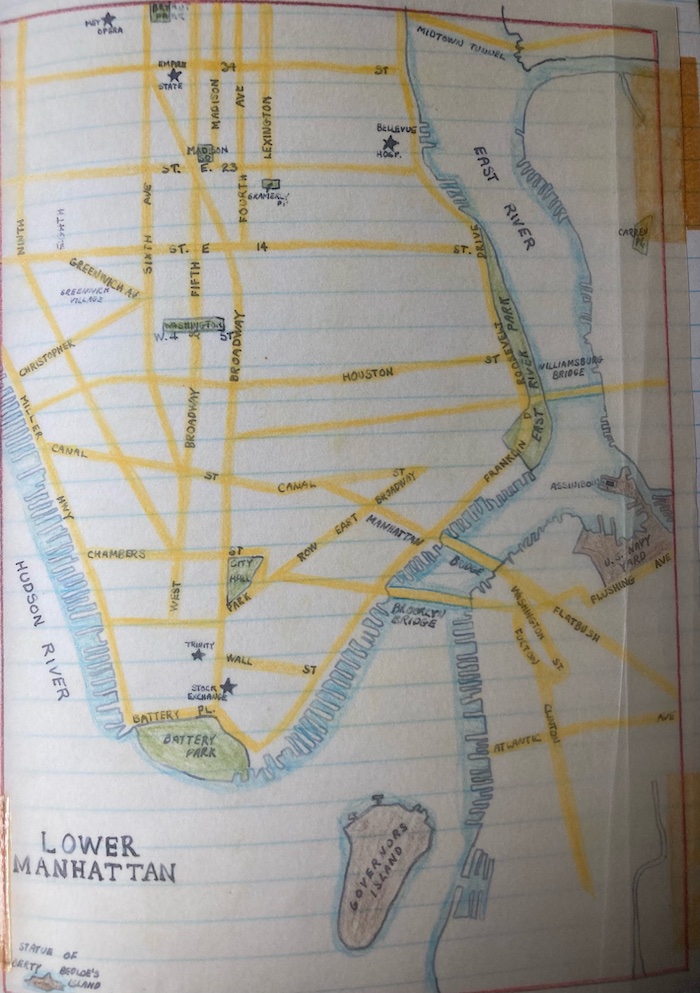
This afternoon the beach party was held at Phillip’s Park. Quite a few of the ship’s company enjoyed some sports and swimming and quite a few more enjoyed drinking the free beer while it lasted. There were some complications in that H.M.C.S. Saguenay held a party at the same time and place and some of the organization by the U.S.N. fell through. However I think that a good time was had by all.
After being in harbour for a few days most of the ship’s officers have visited the local officer’s club. It is a very well equipped club complete with several bars, liquor store, dining facilities, dance floor, swimming pool, patios etc. No doubt our ship’s officer’s will get to know it much better before we leave. From reports from Chiefs, P.O’s and “enlisted men” their respective clubs are very grand in their own right and our ship’s company has certainly enjoyed themselves there. As a matter of fact, some members of our ship’s company have “enjoyed” themselves to the extent of disgracing their ship and country in the eyes of the Americans. On the whole, the American sailors seem to behave themselves much better in Canadian ports than we do in theirs. This is a reflection, no doubt, on the fact that the U.S.N., while being slack in some aspects of discipline, can be strict where it counts. The American Navy, in this port, have been more than generous in extending their facilities to us and they certainly have not received much of a show of gratitude. There is a large number of the ship’s company who are aware of this and it is hoped that during our extended stay we can erase some of the bad feeling that at least a few of our fleet will be leaving.

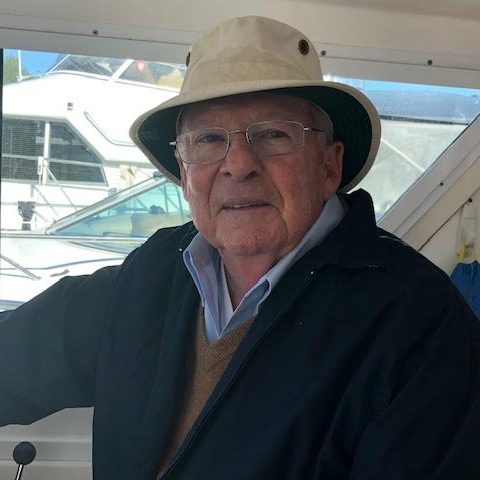
John Murray
John Murray spent twenty eight years in the Royal Canadian Navy and now commands a fleet of a single boat. Married for sixty-one years, he has two children, a daughter-in-law, a grandson, and part-ownership of a cat.
